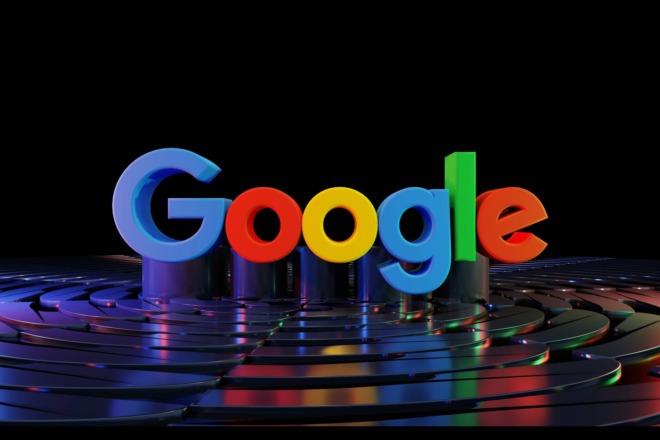Getting the word out about your brand is one of the key ways toward growth. The more people who hear about your business, the more people you’ll attract. How do you increase brand awareness? One way is through online tools.
It takes .05 seconds for someone to form a first impression. By offering a consistent and positive experience every time someone encounters your brand, you increase the odds they’ll think of you when they need the product or service you offer.
Most smaller companies don’t have time to build brand awareness the way giant corporations do. Fortunately, there are many online tools you can use to put your efforts on autopilot and get the word out. We’ve gathered our favorite options. Use them all, or just the ones that work for you.
1. Online Analytics
Advanced big data analytics gives you the ability to see your key performance indicators and how they line up with your company’s goals. You can also gather information about your typical site visitor to help market to them moving forward.
Your website backend likely has some basic data, such as which sites send the most traffic your way and what countries visitors come from. You can also see how long they stay on your page and decide whether you need to make adjustments to elements such as your logo or messaging.
Third-party services allow you to dig a bit deeper into your typical customer’s age, gender and other demographic information. Once you know who your buyers are, you can target similar people via your advertising.
One of the reasons for the ongoing rise in big data analytics usage is that it enables business leaders to move away from guesswork and gut instinct and prioritize conclusions made from reliable, historical information. A big data tool could show you information relating to which of your company’s brand awareness strategies worked best for a certain demographic over the past two years. That knowledge would likely give you the confidence to continue with it.
It’ll also soon become clear that you can make the most of the other tools here by having a well-developed big data analytics strategy.
2. Graphic Design Tools
Your budget may not yet allow for a full-time or even a freelance graphic designer. There are online tools to help you create logos, ads for social media and even print advertisements.
A style guide ensures you keep a consistent appearance across all your designs. Choose a color palette, find a font or two with the right personality and even list sizing options. The more detailed your specifications, the more uniform your efforts.
Building brand awareness is more than just getting your name out there. You must show consumers who you are and stick to it. Over time, they’ll come to see your brand as the go-to for their needs.
One example of a company with solid recognition is McDonald’s. They consistently use the golden arches and advertise fun but fast food. When someone decides to run through a drive-through, McDonald’s is often the first choice due to their branding.
Once you use graphic design tools to create new brand assets, a big data tool can enable profiling the effects of those changes. Did sales go up once you changed your drink bottle from orange to green? Can you see an uptick in online mentions associated with when you launched an improved website?
3. Mapping
Mapping helps you see where your competitors saturate the market and where expansion opportunities are. Laying business analytics over a map provides a clear picture of your business model and the competition.
You can also use mapping for promotional purposes. Highlight what customer segments live where and start with the areas filled with the buyers you’d most like to reach. You can also use a map to see where other advertisements go and where you might need to fill the gap.
Mapping also gives you a competitive advantage by showing where you should send sales teams or where other brands already have a foothold. You may not want to waste time trying to beat out a company with strong name recognition, especially if you’re a startup.
Once you get accustomed to how your business could benefit from mapping tools, it’s easy to consider the possibilities of what you could achieve by importing map information into a big data analytics tool. Perhaps you regularly update a map showing the locations of your newest customers.
Feeding that raw information into a big data interface could help you determine what percentage of your overall customers were new to the company over the last year. Knowing that shows if your brand awareness efforts have worked as you’d hoped or may need tweaking.
4. Social Media Management
According to Statista, there are currently 3.78 billion people on social media. Experts predict the number will reach 4.41 billion by 2025. One of the least expensive and most effective ways to get the word out about your brand is via social platforms.
Finding the time to post links, engage with users and keep up with social networking details is exhausting. Until you can hire a full-time social media guru to stay on top of things, social media management tools are available.
Look for one that works with the platforms you’re on, such as Facebook, Instagram and LinkedIn. Use scheduling features to plan content ahead of time. Some tools allow you to respond to comments and questions within their app, which saves you time.
If you have a big data tool, explore how it could enhance your social media usage by providing valuable insights. For example, it might tell you that contests are the top content type to attract followers to the page and accounted for 60% of all engagements from that segment over the past two years. If so, that’s a strong signal to create similar campaigns to get even more people interested.
5. Surveys
You can’t know how consumers see your brand if you don’t ask them. There are numerous online survey tools allowing you to get a pulse on how others perceive your company. Many let the person leave their thoughts anonymously, which creates a more honest dialogue.
Ask critical questions about the impression people have of your brand. Allow for custom feedback at the end of your survey, so users can tell you anything they’d like.
Use the surveys to tweak your marketing efforts and fix any areas of concern. If multiple participants say you have slow service, how can you fix the issue? You don’t want to gain a reputation for being sluggish.
Use any negative criticism and turn it into a positive for your brand image. You can quickly fix most problems once you understand what they are. If it isn’t an actual problem but simply the perception of one, how can you better communicate with your customers?
Survey results may also encourage exploring related issues within a data analytics platform. Maybe customer feedback indicates people generally feel satisfied with your company but often confuse it with a similarly named one when seeing both brands side by side, such as on a shelf. Customer service logs within the big data platform could show that many people contact representatives about the incorrect brand, giving you a problem to solve.
6. Online PR
Around 77% of people buy from brands that share their values. You have to get the message out about what you stand for, though. Grabbing the attention of the media isn’t always easy. There’s a lot of noise out there competing for the attention of journalists, bloggers and influencers.
Seek out online PR tools where you can add your press release or pay a small fee to reach journalists. You may also want to sign up for lists showcasing stories writers are working on. Knowing their needs allows you to tap into the market and present yourself as an expert on your topic.
Once you develop a few relationships with journalists, stay in touch with online tools such as a mailing list and databases. Ideally, the writer will turn to you repeatedly when they need a source for a story.
Since big data tools can track social signal trends, they’ll help you confirm connections between PR activities and increased brand awareness. For example, they might show a moderate increase in the number of people talking about your startup online for the first time after a reputable business publication profiled it.
Look for Opportunities
There are many tools you can use to help build brand awareness, and they often complement big data strategies. Pay attention to what works for other companies. Network with small business owners and ask them how they enhance their name recognition. Don’t be afraid to try something new. It may just expand your reach or at least show you what else to try.
About The Author
Eleanor Hecks is the Editor-in-Chief of Designerly Magazine, an online publication dedicated to providing in-depth content from the design and marketing industries. When she's not designing or writing code, you can find her exploring the outdoors with her husband and dog in their RV, burning calories at a local Zumba class, or curled up with a good book with her cats Gem and Cali.
You can find more of Eleanor's work at www.eleanorhecks.com.


